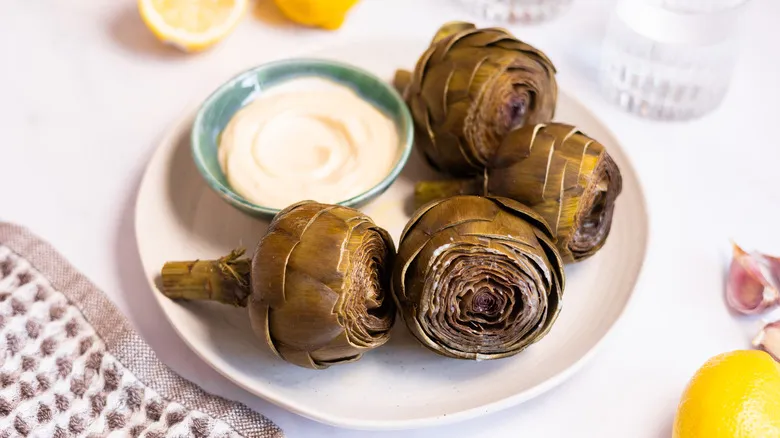Gather the ingredients for the basic steamed artichokes
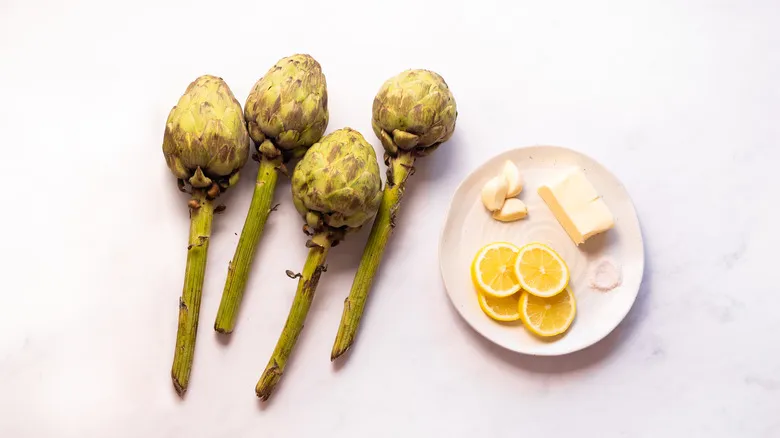
To prepare these simple steamed artichokes, you'll need artichokes, lemons, garlic cloves, unsalted butter, and salt. The main attraction in this recipe is, without a doubt, the artichoke itself. When selecting artichokes, look for medium-sized ones that feel heavy for their size; we’ll share more tips on choosing artichokes later. "If you're looking for a vegan or dairy-free alternative, plant-based margarine can effectively replace butter in this recipe," advises Douglas. "Choose a margarine that mimics the taste and texture of butter for optimal results."
As for the optional aioli, there are many delightful dips that pair beautifully with steamed artichokes. Douglas suggests, "For a classic option, try a simple garlic-infused olive oil or a zesty lemon herb vinaigrette. Hummus, with its creamy consistency and savory flavor, makes a fantastic alternative dip. If you're in the mood for some heat, a harissa yogurt dip can add a spicy kick. Alternatively, a light and refreshing tzatziki can provide a cool contrast to the warm, buttery artichokes."
Step 1: Slice off the stems

Cut the stems of the artichokes, leaving a 1-inch "handle." Take off any tough, dry leaves from the base of the artichokes.
Step 2: Cut off the tops
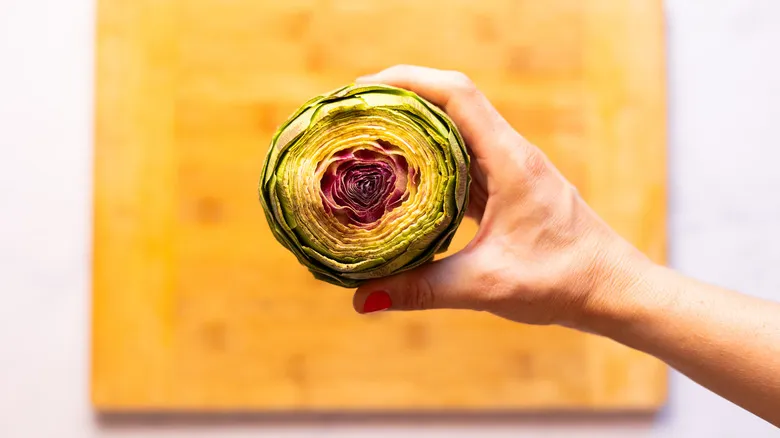
Trim ½ inch from the top of the artichokes to eliminate the dry leaves.
Step 3: Trim the leaves
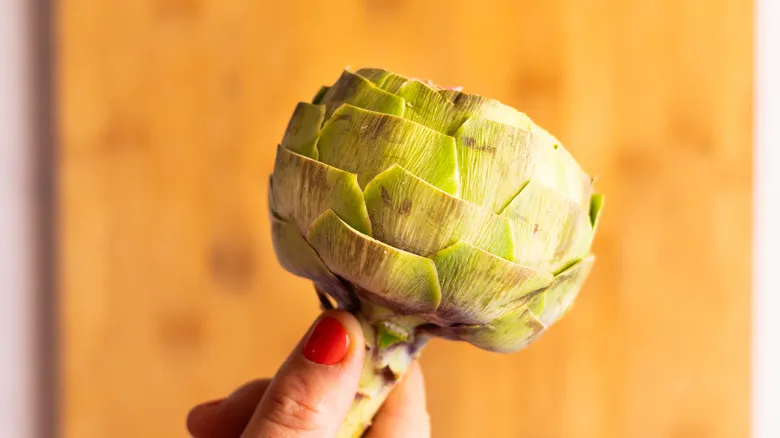
Utilize scissors to trim the pointed ends of the outer leaves.
Step 4: Wash the artichokes
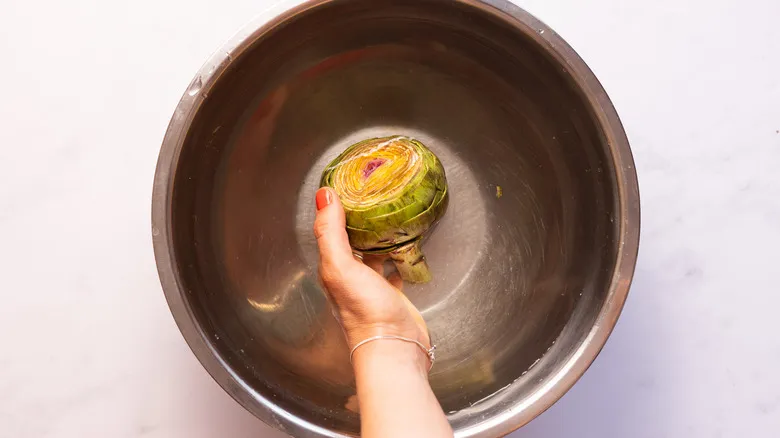
Rinse the artichokes under water to eliminate any remaining dirt. Make sure to clean between the leaves as well.
Step 5: Make the steaming water
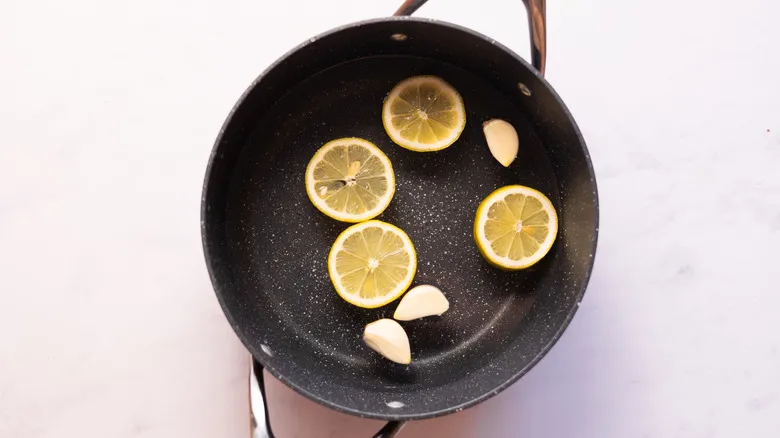
Fill a large pot with 2 inches of water, then add the lemon slices and garlic cloves. Set it on the stove over medium-high heat.
Step 6: Prepare the steamer
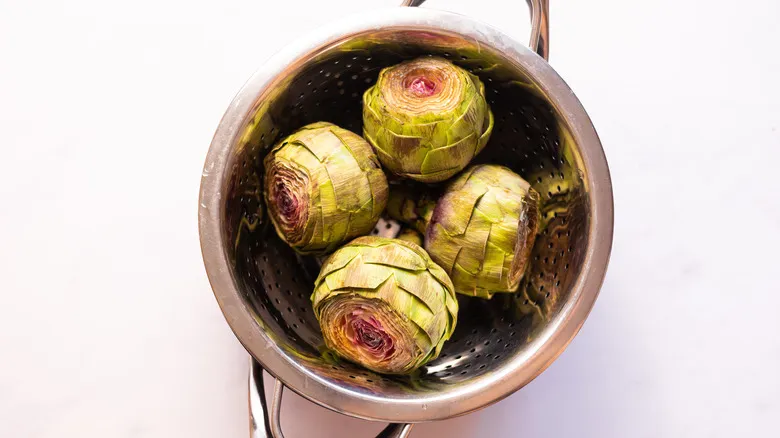
Position a steamer basket over the pot of water and insert the artichokes.
Step 7: Steam the artichokes
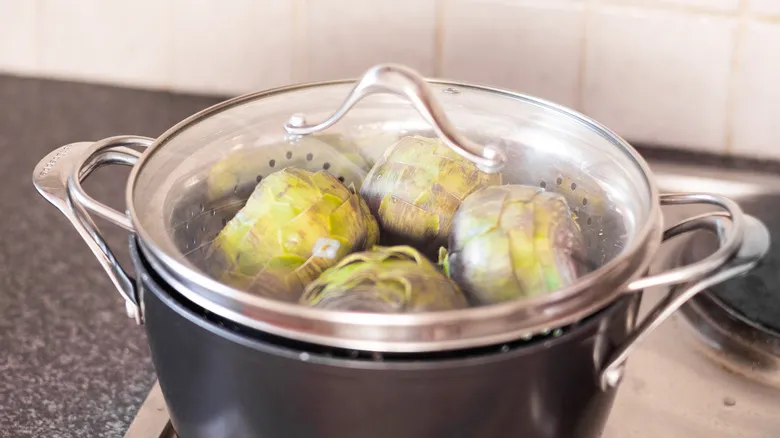
Cover the pot with a lid and steam the artichokes for 30 minutes, or until they are tender.
Step 8: Remove artichokes
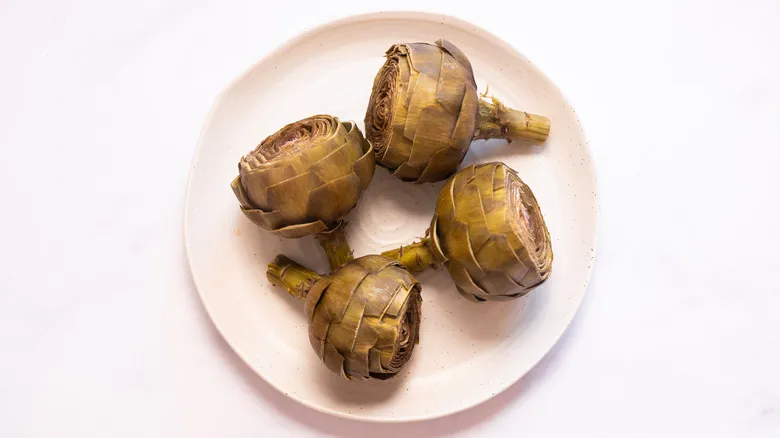
Take the artichokes out of the steamer and arrange them on a serving dish.
Step 9: Finish the artichokes
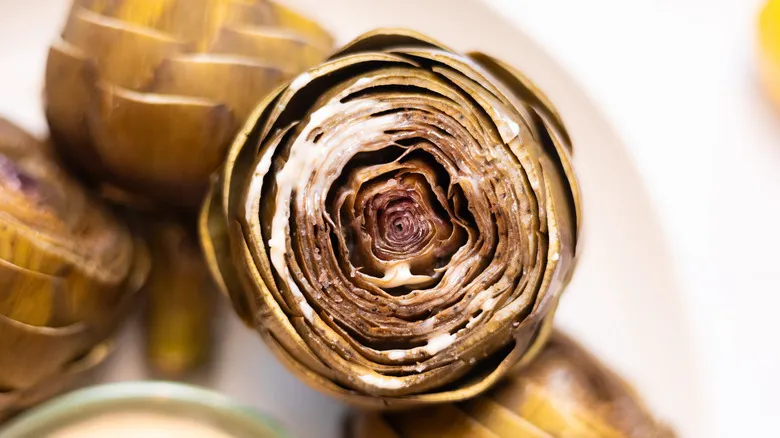
Spread butter on the warm artichokes, then add a sprinkle of salt.
Step 10: Serve the artichokes
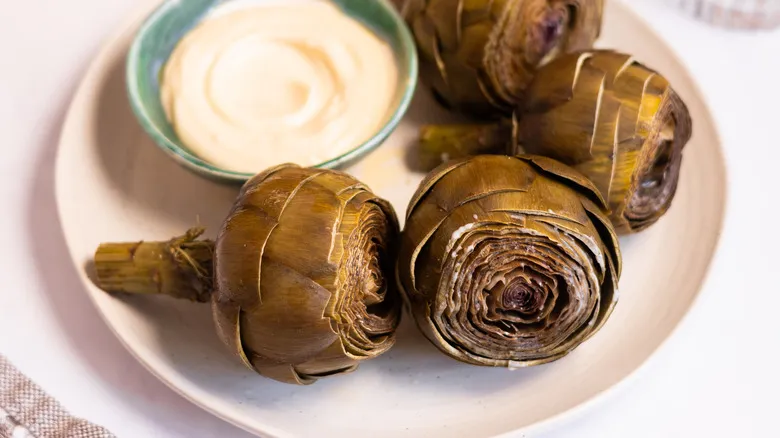
Present the steamed artichokes with aioli on the side, if preferred.
What do basic steamed artichokes taste like?
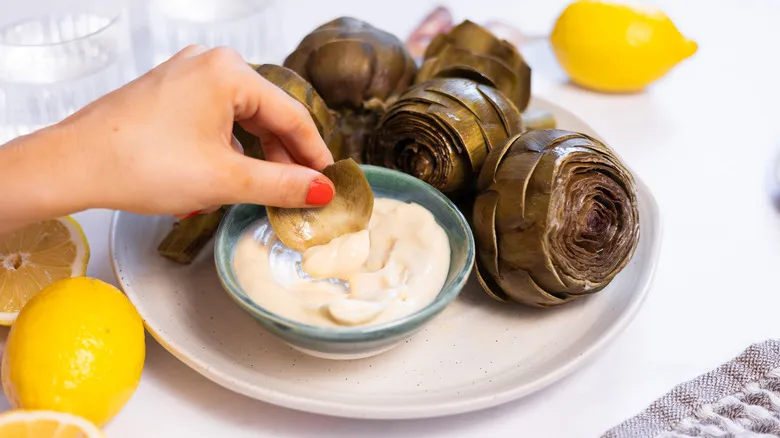
Artichokes present a uniquely intricate flavor profile that is both earthy and subtly sweet, with delicate notes of nuttiness and a pleasantly bitter undertone. At the core of the artichoke is its coveted edible part — the tender, fleshy base known as the heart. This section captures the essence of the artichoke's flavor, featuring a mild sweetness paired with a subtle nutty hint. As one explores deeper into the heart, the taste transforms, revealing a slightly meaty texture that is both satisfying and distinctive.
As you move outward toward the leaves, the flavor becomes more pronounced. The outer leaves contribute to the artichoke's signature bitter edge, offering a pleasant and somewhat tangy taste that contrasts beautifully with its sweeter center.
"Cooking techniques, such as steaming as outlined in this recipe, draw out and soften these flavors, harmonizing the natural bitterness with a tender, almost creamy texture," explains Douglas. "The addition of lemon and garlic during the steaming process elevates the artichoke's natural flavors, imparting a subtle citrusy brightness and a gentle savory touch." The complexity of the artichoke's flavor makes it a versatile ingredient, capable of enhancing a variety of dishes while also shining as the main attraction. Whether savored on its own with butter and salt or incorporated into salads, dips, or pasta, its distinctive taste enriches recipes with depth and character.
When are artichokes in season?

Artichokes reach their peak during the spring months, generally from March to May in the Northern Hemisphere. This timeframe signifies the height of their growing season when these thistle-like vegetables thrive. As temperatures rise and days grow longer, artichoke plants flourish, producing their characteristic round flower heads that contain the prized edible part — the artichoke heart.
The growth cycle of the artichoke plant is closely tied to seasonal changes, flourishing in areas with mild climates and rich soils. Coastal regions with temperate weather, such as California in the United States and the Mediterranean, offer optimal conditions for growing these distinctive vegetables. During their peak season, artichokes exhibit exceptional flavor, tenderness, and freshness. Farmers' markets and grocery stores overflow with these green treasures, allowing consumers to savor their earthy, subtly sweet flavor and delicate texture. The plentiful supply of artichokes during this prime season not only guarantees higher-quality produce but often makes them more affordable as well.
"Although spring is the main season for artichokes, variations in climate and farming practices around the world can slightly alter or extend their growing periods. Additionally, some areas may see a smaller secondary harvest in the fall, though it is usually less abundant than the spring yield," explains Douglas. Outside of the peak season, artichokes may still be available thanks to modern agricultural methods and global trade, although their quality and availability can fluctuate.
Recommended

Chocolate-Covered Ice Cream Bites Recipe

Dirt Patch Halloween Brownies Recipe

Classic Carrot Cake Cupcakes With Caramelized Walnuts Recipe

Salted Caramel-Stuffed White Chocolate Chip Cookies Recipe
Next up

